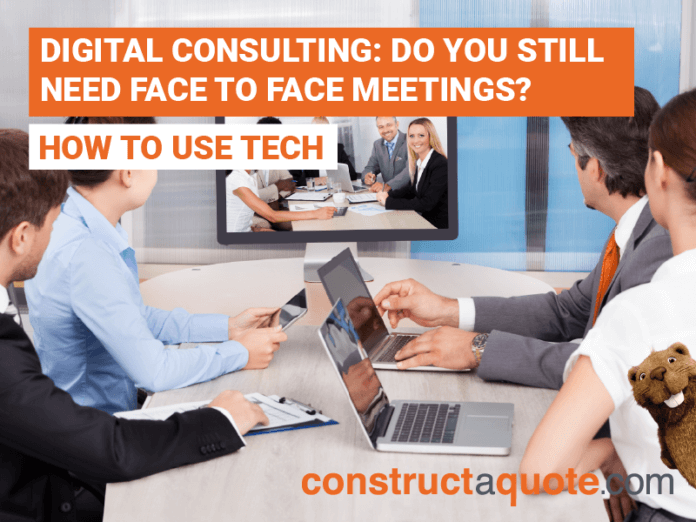by constructaquote - 27 June 2017


Whether it’s a skype call, email thread, whatsapp convo, video conference, or virtual reality – there are many ways that business can be done without arranging a meeting in person.
As we develop into more of a digital age, with technology creating more and more ways for us to stay connected and socialise, is there really still a need for face to face meetings anymore?
Here, we take a look at the benefits of face to face meetings as well as the benefits of remote meetings…
Benefits of face to face meetings
A lot of things can happen when you meet in person. An experiment done by researchers at the University of Chicago and Harvard found that negotiators who shook hands were more open and honest, and reached better business outcomes. Hand shaking activates areas of the brain associated with rewards and more business deals can be done face to face compared to those done digitally. Whilst video conferencing includes facial interaction , nothing can replace the warmth of a handshake.
Face to face meetings also allow people to analyse the other persons body language, facial expressions, eye contact and human emotions. Looking someone in the eye and getting a gut feeling on whether they mean what they say is the best way to decide if you want to do business with someone. A lot of this analysing is done subconsciously and plays a big part in how you feel when you leave a meeting.
There’s no denying relationships develop stronger in person. Meeting participants can learn more about each others personalities which could lead to stronger partnerships in future.
Benefits of remote meetings
With video conferencing, communication can take place across the globe by multiple participants. This eliminates the large costs associated with travel and is much easier to arrange as less time is associated with planning and logistics. Whilst many Video conferencing services are free , some do come at a cost if you require a better quality service. However, these costs are still much less than the costs associated with travelling to a meeting , hiring a conference room, paying for teas and coffees, putting people up in hotels etc…
Other forms of remote communication, such as, email, instant messenger and skype calls are all great ways to engage in conversation and get answers to questions quickly.
The less time spent organising and commuting to meetings, the more time available to work on projects and get tasks done.
Another benefit of remote meetings is that things can get logged and tracked which is great for referring back to at a later date. Whilst video conferencing doesn’t track conversations (unless someone keeps minutes) , other forms of text based conversations are the best way to discuss anything regarding costs, contract terms and important project details.
What should be done in person?
What can be done remotely?
If you’re thinking of implementing more digital methods of communication into your business, start by holding remote meetings with your staff only first before planning remote meetings with clients. This way you can test what works with people you know first before getting clients involved.

by Charlotte Houghton - 7 October 2020
by constructaquote - 6 October 2020
by Charlotte Houghton - 29 September 2020
by Charlotte Houghton - 24 September 2020